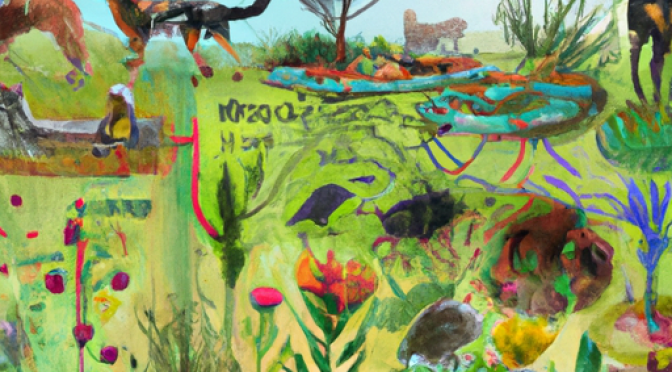Introduction
Agroecology and biodiversity conservation are crucial aspects of sustainable agriculture. With the advancements in artificial intelligence (AI) and machine learning (ML), these fields can benefit greatly from the application of these technologies. This article explores the potential contributions of AI and ML in promoting agroecology and biodiversity conservation.
Enhancing Precision Agriculture
AI and ML can revolutionize precision agriculture, which focuses on optimizing inputs and minimizing environmental impact. By analyzing large amounts of data, such as soil composition, weather patterns, and crop health, AI algorithms can provide farmers with valuable insights. These insights can help farmers make informed decisions regarding irrigation, fertilization, and pest control, leading to more efficient resource utilization and reduced environmental harm.
Predictive Analytics for Pest Management
Pests pose a significant threat to agricultural productivity and biodiversity. AI and ML can assist in predicting pest outbreaks by analyzing historical data, weather patterns, and pest life cycles. By identifying potential pest hotspots, farmers can take proactive measures to prevent infestations, reducing the need for chemical pesticides. This approach not only protects crops but also preserves beneficial insects and promotes biodiversity in agricultural landscapes.
Optimizing Crop Breeding
AI and ML can accelerate the process of crop breeding, leading to the development of more resilient and productive varieties. By analyzing genetic data, environmental factors, and desired traits, AI algorithms can identify promising combinations for crossbreeding. This targeted approach can significantly reduce the time and resources required for traditional breeding methods, enabling the development of crops that are better adapted to changing environmental conditions and more resistant to pests and diseases.
Monitoring and Conservation of Wildlife
AI and ML can also contribute to the monitoring and conservation of wildlife in agricultural landscapes. By analyzing satellite imagery and acoustic data, AI algorithms can detect and track endangered species, helping researchers and conservationists identify critical habitats and implement appropriate conservation measures. This technology can aid in mitigating the negative impacts of agriculture on biodiversity and promote coexistence between farming activities and wildlife conservation.
Conclusion
The integration of AI and ML in agroecology and biodiversity conservation holds great promise for sustainable agriculture. By leveraging these technologies, farmers can optimize resource utilization, reduce environmental harm, and enhance crop productivity. Additionally, AI and ML can aid in the preservation of biodiversity and the protection of endangered species. As these technologies continue to advance, their potential to contribute to agroecology and biodiversity conservation will only grow, making them invaluable tools in the pursuit of a more sustainable future.

